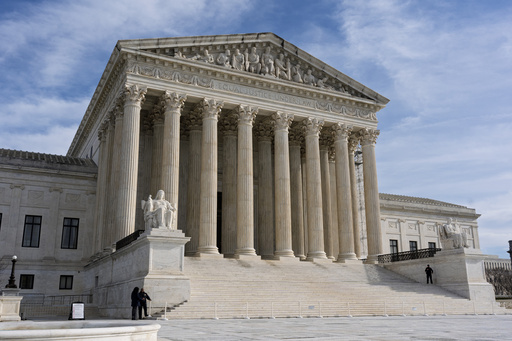WASHINGTON
By LINDSAY WHITEHURSTAssociated Press
A teenage girl with a rare form of epilepsy has won a unanimous Supreme Court ruling that’s expected to make it easier for families of children with disabilities to sue schools over access to education. Thursday’s ruling comes after her family said her Minnesota school district didn’t do enough to get her the disability accommodations she needs to learn. The girl and her family appealed to the Supreme Court after lower courts ruled against their disability discrimination case. Some courts had been holding schools to a different legal standard. The Osseo Area Schools district has argued changing the standard could expose understaffed schools to more lawsuits even when they’re making good faith efforts.
WASHINGTON (AP) — A teenage girl with a rare form of epilepsy won a unanimous Supreme Court ruling on Thursday that's expected to make it easier for families of children with disabilities to sue schools over access to education.
The girl's family says that her Minnesota school district didn’t do enough to make sure she has the disability accommodations she needs to learn, including failing to provide adequate instruction in the evening when her seizures are less frequent.
But lower courts ruled against the family's claim for damages, despite finding the school had fallen short. That’s because courts in that part of the country required plaintiffs to show schools used “bad faith or gross misjudgment,” a higher legal standard than most disability discrimination claims.
The district, Osseo Area Schools, said that lowering the legal standard could expose the country’s understaffed public schools to more lawsuits if their efforts fall short, even if officials are working in good faith.
The family appealed to the Supreme Court, which found that lawsuits against schools should have the same requirements as other disability discrimination claims.
Children with disabilities and their parents “face daunting challenges on a daily basis. We hold today that those challenges do not include having to satisfy a more stringent standard of proof than other plaintiffs,” Chief Justice John Roberts wrote for the court.
The court rebuffed the district's argument, made late in the appeals process, that all claims over accommodations for people with disabilities should be held to the same higher standard — a potentially major switch that would have been a “five-alarm fire” for the disability rights community, the girl's lawyers said.
Justice Clarence Thomas, joined by Justice Brett Kavanaugh, wrote separately to say he would be willing to consider those arguments at some point in the future, though he didn't say whether they would win.
But Justice Sonia Sotomayor, joined by Justice Ketanji Brown Jackson, saw it differently. Sotomayor wrote in another concurrence that adopting those higher standards more broadly would “eviscerate the core” of disability discrimination laws.
The girl's attorney Roman Martinez, of Latham & Watkins, called Thursday's ruling a win for the family and “children with disabilities facing discrimination in schools across the country." He added that "it will help protect the reasonable accommodations needed to ensure equal opportunity for all."
___
Follow the AP’s coverage of the U.S. Supreme Court at https://apnews.com/hub/us-supreme-court.


